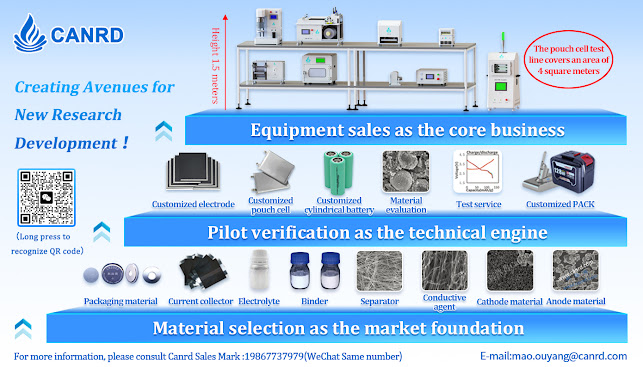Effect of conductive agent on the electronic conductivity of mixed powder & electrode
Latent dissolution behavior of electrolytes: high voltage, high stability batteries | NSR
Latent dissolution behavior of electrolytes: high voltage, high stability batteries | NSR
Potassium-ion batteries are low-cost, abundant in resources, and have a potential high voltage window, showing great potential in the field of large-scale energy storage. The electrolyte has a significant impact on the performance of the battery. Ether-based electrolytes have attracted much attention because they can effectively dissolve potassium salts and provide high ionic conductivity. However, this type of electrolyte also has obvious shortcomings: weak antioxidant ability and poor compatibility with graphite negative electrode materials . This greatly limits its application in battery systems.
Lithium battery double-layer coating technology principle
Double-layer coating is a multi-layer microstructure design for lithium-ion battery pole pieces to improve electrode performance, such as:
Research and application of new binders in lithium batteries
Analysis of Lithium Battery Injection Process
Analysis of Lithium Battery Injection Process
The "Breathing Technique" in Lithium Battery Baking: Decoding the Core Technology of Nitrogen Cycle
The "Breathing Technique" in Lithium Battery Baking: Decoding the Core Technology of Nitrogen Cycle
Why is nitrogen circulation introduced in the vacuum baking of lithium batteries? The seemingly safe inert gas actually hides the risk of condensation! Behind the efficiency improvement is the ultimate control of the "breathing rhythm" by precision technology - this article deciphers the game logic of nitrogen filling, dehumidification and risk prevention and control.
Is it necessary to introduce nitrogen circulation during vacuum baking of battery cells? When filling with nitrogen, the pressure inside the cavity will change. Will the moisture condense again and affect the baking effect?
Salt-assisted recovery of sodium metal anode for high-rate sodium batteries———Wei Weifeng AM, Central South University
Wei Weifeng AM, Central South University: Salt-assisted recovery of sodium metal anode for high-rate sodium batteries
Background
Rechargeable sodium metal batteries are considered to be one of the most promising electrochemical energy storage systems with high energy density and high cost performance. However, the inactive sodium (Na) formed during storage and assembly processes has seriously hindered its practical application. This chemical instability stems from the high activity of Na, which chemically reacts with oxygen and moisture during electrode processing or electrochemically reacts with the electrolyte during battery operation, easily leading to excessive accumulation of inactive Na species on the surface, resulting in battery performance degradation or even failure.
An Overview of the Four Steps in the Formation of Lithium Batteries
The formation process is an indispensable step in the manufacturing of lithium-ion batteries, as it directly affects the battery’s performan...

-
Effects of Conductive Agents and Binders on Compression and Compactability of NCM Powders In the field of energy development, lithium-ion b...
-
Determined to win ‖ Sun Jie's team from Tianjin University: Micro-multifunctional additives significantly improve the ultra-high voltage...
-
Single-sided pole piece manufacturing method This issue introduces the production process of single-sided pole pieces to help you obtain s...
-
The "Three Musketeers" of Lithium Batteries: Lithium Battery Packaging Film, Lithium Battery Separator and Battery Cell Blue Film ...
-
Interfacial friction makes the vertical structure of lithium metal batteries summary A practical high-energy-density lithium metal battery r...
-
First author: Meng Li Corresponding author: Boryann Liaw Corresponding Unit: Idaho National Laboratory, USA Achievements at a Glance This ...
-
Lithium cobalt oxide is the first commercialized cathode material for lithium-ion batteries. Its theoretical gram capacity after complete de...







